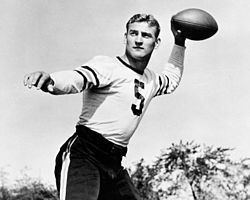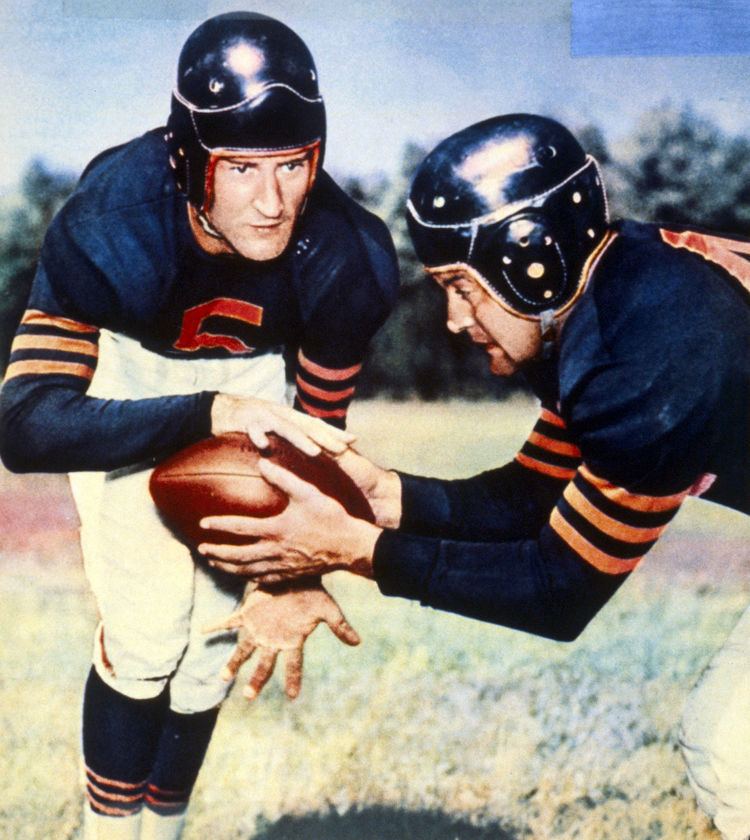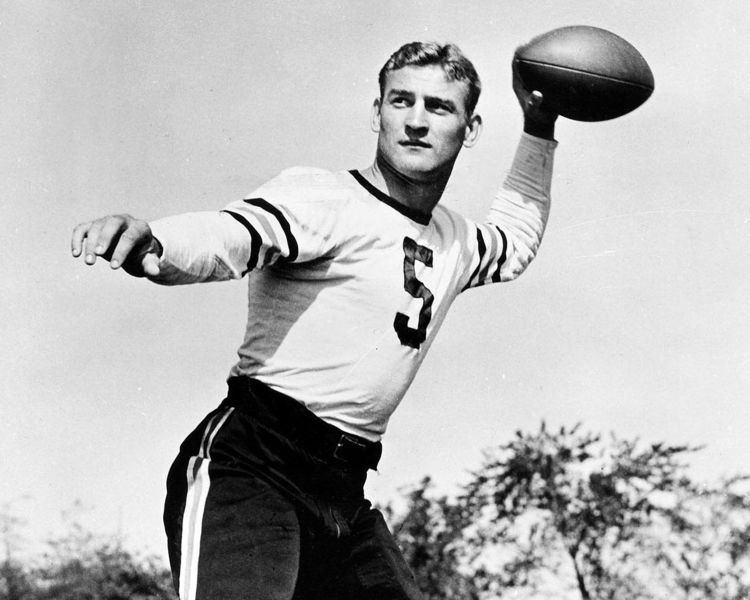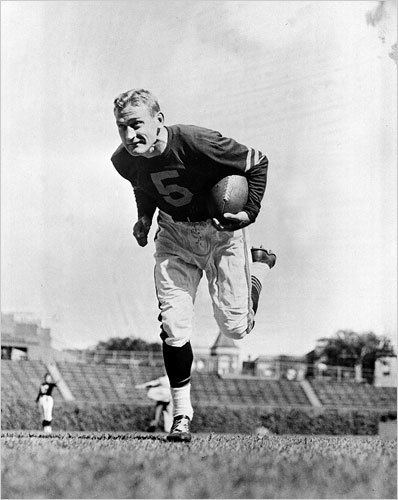College Duke | Name George McAfee | |
 | ||
Date of birth (1918-03-13)March 13, 1918 Date of death March 4, 2009(2009-03-04) (aged 90) NFL draft 1940 / Round: 1 / Pick 2 Died March 4, 2009, Durham, North Carolina, United States | ||
Allegiance United States of America | ||
George Anderson McAfee (March 13, 1918 – March 4, 2009) was a professional American football player. He played halfback for the Chicago Bears from 1940 to 1941 and 1945 to 1950. He played college football at Duke University. McAfee is a member of the College Football Hall of Fame and the Pro Football Hall of Fame.
Contents

Early life and college

George McAfee was born in Corbin, Kentucky. He was one of several brothers, including future NFL halfback Wes McAfee. Soon after his birth, his family moved to Ironton, Ohio, where he attended Ironton High School. McAfee played college football for the Duke Blue Devils football team of Duke University from 1937 to 1939. During his three years at Duke, the team compiled a record of 24–4–1. He led the Blue Devils to Southern Conference (SoCon) championships in 1938 and 1939. In his senior season in 1939, he led the team in rushing, receiving, scoring, kickoff returns, punt returns, interceptions, and punting. He earned All-America honors from the Associated Press, United Press, Central Press, and Newspaper Enterprise Association, among others.

McAfee also batted .353 as a center fielder for the Duke Blue Devils baseball team and captured a SoCon 100-meter championship as a senior.
Professional career

During his time playing pro football, he scored 234 points, gained 5,313 combined net yards, intercepted 25 passes in eight seasons, held the record for punt return average at 12.78 yards, and was the NFL punt return champion. Among some of his feats, he returned a punt for 75 yards to beat the Brooklyn Dodgers during his first exhibition game with the Bears, and ran back a kickoff for 93 yards and threw a touchdown pass to help the Bears win over their rival, the Green Bay Packers. From 1942 to 1945 he served in the Navy during World War II and missed potentially his best football playing years.

Nicknamed "One-Play McAfee", he was known for explosive speed; he ran a 100-yard dash in 9.7 seconds. Red Grange, a star of earlier Bears teams, called McAfee "the most dangerous man with the football in the game."
1941 was a banner year for McAfee: he led the league with a 7.3 rushing yards per carry while scoring a league-high 12 touchdowns in an eleven-game season. While his rushing yardage totals seem modest by today's standards, he had to share the backfield with other outstanding running backs, such as Hugh Gallarneau, Norm Standlee, and Bill Osmanski, as well as Hall of Fame quarterback Sid Luckman. Known for his versatility, in 1941 his 12-touchdown total consisted of six by rushing, three receiving, one by punt return, one by kickoff return, and one by interception return, all while helping the Chicago Bears to their second straight NFL league championship over the New York Giants.
Death
McAfee developed dementia in his later years and moved into Cypress Court, an assisted living facility specializing in Alzheimer's and memory care in Decatur, Georgia. Cypress Court is owned and operated by the Seattle-based Emeritus Senior Living. In February 2009, McAfee wandered out of his room at Cypress Court and accessed a toxic substance that was supposed to be kept in a locked cabinet. McAfee then ingested the toxic substance and died as a result of chemical burns to his lips, esophagus, and lungs. The State of Georgia found Emeritus negligent in McAfee's death. McAfee's family sued Emeritus and ultimately settled out of court for an undisclosed sum. The circumstances surrounding McAfee's death were featured in the 2013 PBS Frontline documentary "Life and Death in Assisted Living".
